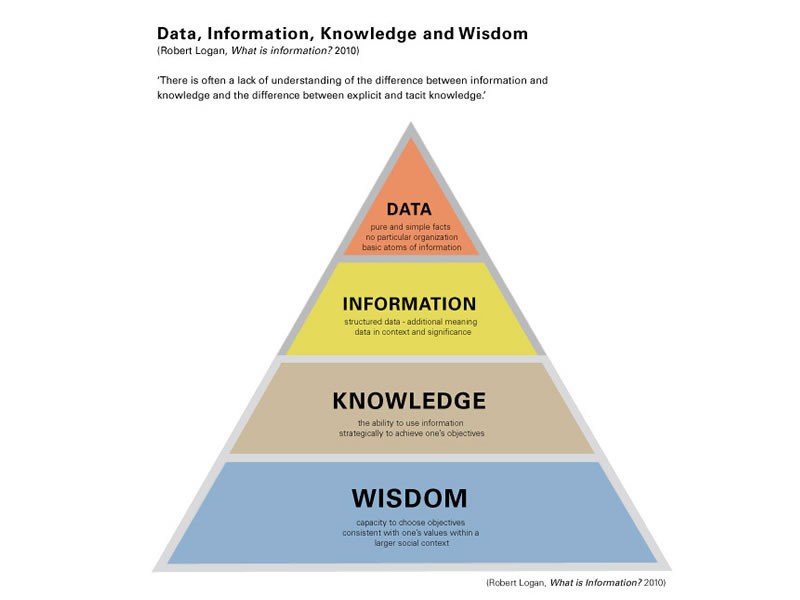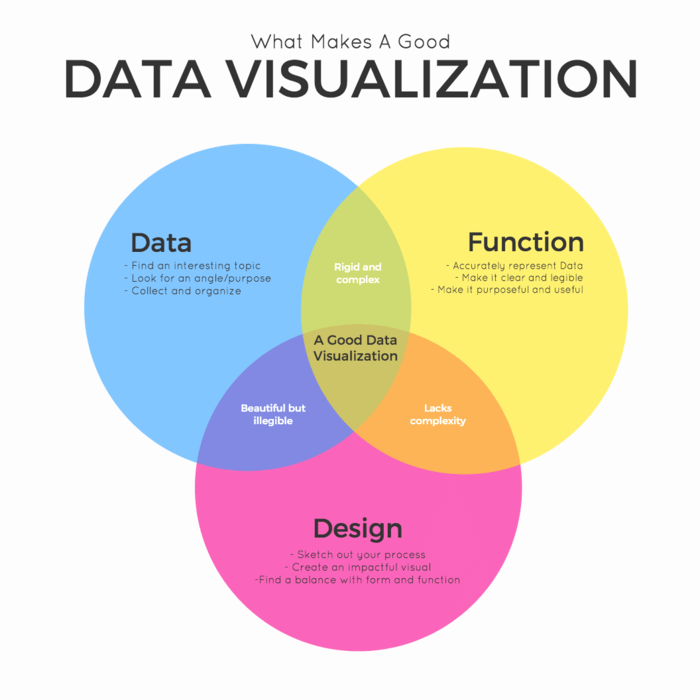Insight Blog
Agility’s perspectives on transforming the employee's experience throughout remote transformation using connected enterprise tools.
8 minutes reading time
(1644 words)
How can you differentiate between data and information? Explained
What’s the difference between data vs information, and how can they both be leveraged effectively? Learn more in this article.
The term "Data" is often seen as the raw material that, when processed, becomes information. Data can take many forms, such as texts, numbers, images, and sounds.
The key distinguishing feature of data is that it has not been processed in any way that makes it meaningful. In contrast, information has been organized and presented in a way that makes it useful.
For example, data about the prices of homes in a certain area can be displayed as a graph showing the average price of homes over time. This processed data is now information that can be used to make decisions.
When considering data and information, it is important to remember that one cannot exist without the other. Data must be processed into information in order for it to be used effectively.
The two terms share some similarities, but data and information are not the same things. Data is just a piece of information, while information is entire. Read on to know the differences between data and information.
A knowledge library can help you to organize your information. This can be helpful if you want to make sure that your information is easy to find. When it comes to creating a knowledge library, there are a few things that you should keep in mind. First, you need to decide what type of information you want to include. Second, you need to determine how you want to store the information. Third, you need to decide who will have access to the library. Finally, you need to decide how often you will update the library. By keeping these things in mind, you can ensure that your knowledge library is effective and helpful in terms of storing information.
Let dig a bit deeper on the differences.
Distinguishing between information and data
Data is shorthand for "facts and figures." Each data point is just a random bit of information that doesn't tell us much by itself. One fact or a group of facts can both be referred to as "data." A datum is "something given," which is where the word derives from in Latin.
While "datum" is still the proper technical singular form of "data," it is rarely used in everyday speech.
The dictionary defines information as "knowledge or news obtained or imparted." It's what you get when you take raw data and run it through a series of interpretive and organizational hoops. The Latin word īnfōrmātiō means "to form" or "to conceive," which is whence we get our word.
Explaining the meaning of the word "data"
Text, observations, figures, photos, numbers, graphs, and symbols are all valid forms of data. Examples of data points include prices, weights, addresses, ages, names, temperatures, dates, and distances.
Data in its raw form is meaningless and cannot be used in the decision-making process. That is to say, data is meaningless without some sort of analysis, and harnessing the power simple tool like Google sheets for data visualization adds depth of the analysis exponentially. Data can be straightforward; in fact, it often appears to be of little use until it is processed, sorted and understood.
There are two distinct kinds of data:
- Quantitative: Weight, volume, and price are all examples of the kinds of quantitative data that can be presented.
- Qualitative: Descriptive information that cannot be reduced to a single numeric value, such as a person's name, sex, or eye color, is known as qualitative data.
Learn more: Top 10 Benefits of a Knowledge Base in 2022
Explaining the meaning of the word "information"
To gain knowledge by any of the means (study, communication, research, or instruction) is the definition of information. Data are only useful when analyzed and interpreted to produce information.
Data refers to discrete facts and figures or charts and graphs, whereas information describes how those facts and figures are understood. The collection of information on a computer is possible after analyzing the data.
Temperature records taken at the same site over the course of several years would constitute one such piece of data. Those temps are meaningless apart from the rest of the information provided. When this data is analyzed and compiled, however, seasonal temperature patterns and broader climatic trends become apparent. Data is useless unless it can be assembled and analyzed in a meaningful way that leads to actionable insights.
Information vs knowledge
By "information," we mean compiled facts on a topic gleaned from a variety of media and human interactions. The term "knowledge" is used to describe an individual's level of familiarity with a subject, whether from formal schooling or personal experience.
Distinctive features of data vs. information
Data is a collection of facts, and information provides context for the data. So, the difference is clear when you compare the two.
In contrast to the raw nature of data, information is structured for easy consumption.
Individual data points may have no correlation with one another. Information is mapped out in order to show the big picture of how things work together.
Data without context is useless.
The information relies on data, but data does not rely on the information.
In most cases, data is presented in the form of charts, tables, or statistics. Words, phrases, and concepts are the usual vehicles for conveying information.
Decisions can't be made only on the basis of data.However, information is used in the decision-making process.
Data and information examples
Consider the following data and information examples to better understand the distinctions between data and information:
A digital marketing agency's data is the sum total of one customer's bill. Bills are collected from a variety of customers over a period of time. However, these bills can tell agency owners a lot about the popularity of particular services and whether or not current prices are sufficient to cover costs like paid tools and employees.
Every customer's opinion on customer service as expressed in a survey is a data point. Yet insights into how to boost your customer service can be gleaned from a compilation of that customer's comments over time, and on a larger scale, responses from several customers over time.
One piece of information may be the quantity of "likes" a social media post receives. Businesses can use this information by pairing it with other metrics of social media interaction. Thus, a business may get a sense of which platforms are most successful and where its efforts would be best spent to increase engagement among its target audience.
Inventory counts are information in and of itself. However, by examining the information collected over a longer period of time, businesses can better identify supply chain concerns and boost the effectiveness of their systems.
The prices of rivals are just one piece of information, but when combined with other data sets, they can show niches in the market and competitive advantages.
Learn more: Knowledge Culture in Knowledge Management
How data or information can be useful for businesses?
What's the deal with differentiating data from information, and why does it matter to businesses? It is needed because businesses need to put an emphasis on data collection, analysis, and application if they want to succeed. They can use data or information to their advantage.
Smarter and faster business decisions can be made with the help of data (and the information obtained from it).
A business may do this in order to track how well its advertisements or articles are doing. By compiling and analyzing this information, they may learn a great deal about their target audience, including what images, words, and even goods are most likely to pique their interest.
Potentially, this might also help them learn more about their demographic as a whole, which would be useful for future product development, more effective branding, and more effective communication.
With the correct data, one can discover virtually infinite knowledge and insights, which are of great value when making choices.
Benefits of knowledge culture
A knowledge-driven culture can be beneficial to an organization, but there are challenges that must be overcome.
For instance, various groups might amass and store incompatible data sets. No one else in the company will be able to use or understand the data until it is stored in a centralized location.
If the data is not monitored on a regular basis, it may not be of high enough quality for analysis, and any conclusions drawn from it may be flawed.
Storing information
When it comes to storing information, there are a few things to keep in mind. First, you'll want to make sure that the information is well organized. This will make it easier to find later on. Second, you'll want to use a system that makes sense to you. Some people prefer to store information alphabetically, while others prefer to group it by topic.
Whichever system you choose, just make sure that it's one that you can easily remember and follow. Finally, don't be afraid to purge old or outdated information from your library.
Just because you once found something useful doesn't mean that it will always be relevant. By regularly cleaning out your library, you can help ensure that the information you're storing is always up-to-date and easy to find.
When everyone has access to the same knowledge library, teams are better informed, more productive, and more confident—giving your company a competitive advantage.
Wrapping up
Information is usually derived from data, although it is difficult to determine which is more valuable. It's possible that data can be rendered useless despite the fact that it was collected and recorded, for example, due to improper or biased processing or organization.
Categories
Blog
(2590)
Business Management
(318)
Employee Engagement
(204)
Digital Transformation
(172)
Intranets
(119)
Growth
(118)
Remote Work
(61)
Sales
(48)
Collaboration
(37)
Culture
(29)
Project management
(29)
Customer Experience
(26)
Knowledge Management
(21)
Leadership
(20)
Comparisons
(5)
Ready to learn more? 👍
One platform to optimize, manage and track all of your teams. Your new digital workplace is a click away. 🚀
Free for 14 days, no credit card required.














